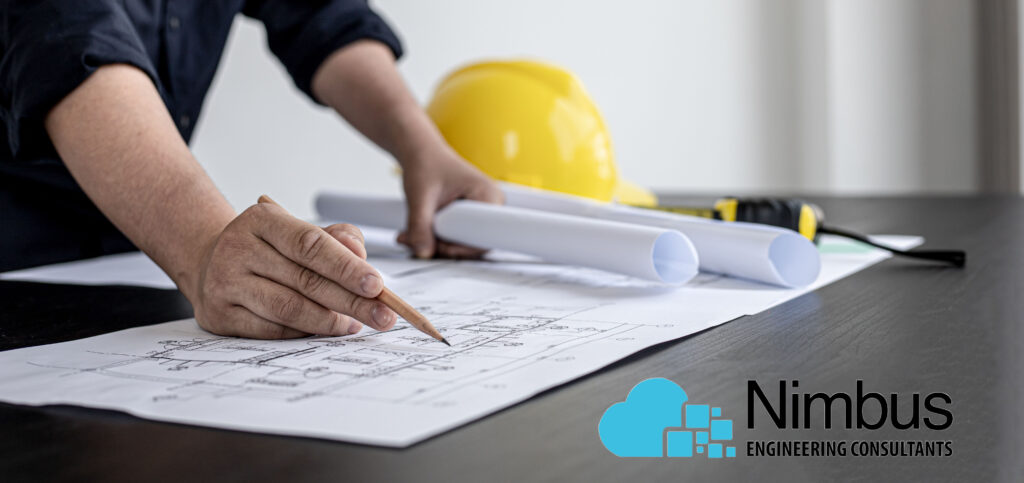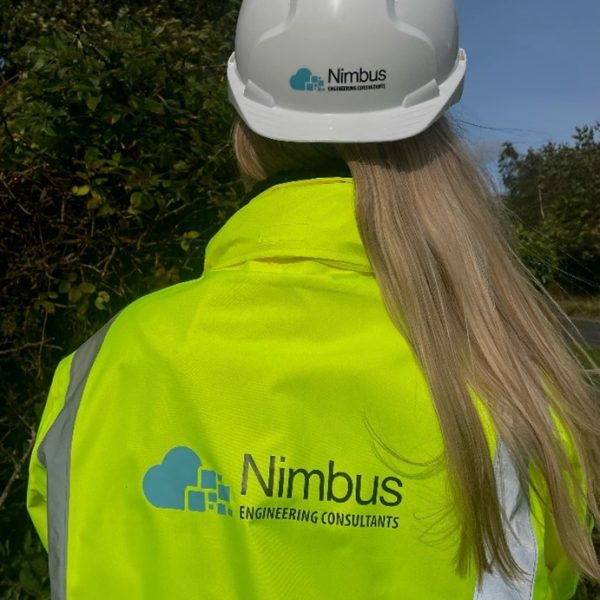Thinking About Your SuDS Strategy? Start With A SuDS Report
Nimbus Engineering can provide help and advice on any, and all aspects of drainage design and sustainable urban drainage strategies. This includes; SuDS assessments and SuDS Reports helping you meet all the regulations required by national and local planning authorities, UK Wide.
Involving a SuDS report specialist from the outset will ensure a smooth planning processes, avoidance of delays and fewer costs further into the development.
Send a Message

Cost Effective

Bespoke

Close Contact with Local Authorities

A Holistic Approach
Whether you’re an architect, developer, builder, planning consultant, landowner or any other professional involved in the development of a construction project, you need a solution that:
- Ensures compliance
- Sticks to timescales and budgets
- Is tailored to your individual site requirements
At Nimbus, our holistic approach means that we handle your SuDS Reports so that you don’t have to worry.
As we have great relationships with the Lead Local Flood Authorities (LLFA), and are therefore versed with their individual requirements, you can be sure that you get the right solution for your project, no matter what size and wherever it may be.
SuDS Reports: The What, Why, When & Where
The use of sustainable urban drainage systems is a key Government aim set out to manage surface water run-off as close to its source as possible. This reduces the potential impacts and risks of surface water flooding and fluvial flooding by reducing the peak flows entering the rivers and the sea.
SuDS Design reports are a crucial component in supporting planning applications, from concept to post-approval planning condition discharge. Involving a SuDS report specialist from the outset will ensure a smooth planning processes, avoidance of delays and fewer costs further into the development.
Select from one of the links below to learn more about how SuDS reports can help you with your next or current project.
- What Are SuDS (Sustainable Urban Drainage System) Reports?
- The Benefits of SuDS
- The Nimbus Approach to Sustainable Urban Drainage System Reports
- Why are SuDS reports important?
- What Properties Need Sustainable Drainage System Reports?
Send a Message


What Are SuDS (Sustainable Urban Drainage System) Reports?
SuDS reports are assessments requested by local authorities as part of their planning procedures, and quite often are required before a planning application can be validated.
Lead Local Flood Authorities (LLFA) request that surface water arising from any proposed development should be managed through the use of Sustainable Urban Drainage Systems. They require an assessment of the existing and proposed surface water run off rates, as well as a solution that ensures that the SuDS management train has been followed.
The SuDS report must demonstrate the strategy that is being undertaken in order to minimise the risk of flooding and pollution, both on the site and in the local surrounding area.
The level of information required by the Lead Local Flood Authorities (LLFA), is very much dependant on the nature and scale of the development, and the varying requirements of each Lead Local Flood Authority (LLFA), as well as local conditions, such as the proposed development site being within a critical drainage area.
The Natural & Sustainable Approach
Sustainable drainage systems are a natural and sustainable approach to managing surface water drainage and works through implementing methods that slow and/or hold back the water that runs off from a site, as well as discharging to the ground in order to ensure flood risk is reduced at the proposed development site and elsewhere. SuDS should be applied to all proposed developments, from minor extensions to larger developments, as required by planning policy, unless there is a specific reason that prevents its application.
Sustainable drainage systems are designed in specific ways that mean they mimic nature, often dealing with rainwater in the area where it falls. SuDS can be planned to transport (convey) surface water, slow runoff down (attenuate and restrict) before it can enter waterways, provide zones to store water in geographical contours, and can be used to allow rain to soak (infiltrate) into the earth or evaporate, and finally transpire from vegetation (known as evapotranspiration).
Send a Message

The Nimbus Approach to Sustainable Urban Drainage System Reports
Our SuDS reports include the following, as per the relevant local authorities’ requirements and is bespoke to the unique nature of your development:
- Flood Risk Assessment: assessing the flood risk from all sources, and providing mitigation measures where necessary (a requirement for planning applications for all major developments within flood zone 1)
- Pre- and post-development surface water run off calculations and modelling
- Pre-development contributing area and exceedance route plans
- Post-development contributing area and exceedance route plans
- Percolation/Infiltration tests to BRE365 standards
- BRE365 Soakaway Sizing calculations and modelling
- Surface water attenuation calculations and modelling
- Assessment of SuDS hierarchy in line with the local and national policies
- Proposed SuDS strategy in line with local and national policies
- Outline SuDS Design layout plans for your development
- Detailed SuDS Design plans, to show feasibility to the LLFA and for Construction
- Management, and maintenance plan reports for the SuDS for the lifetime of the development
- Describe the existing and proposed drainage arrangements for the site.
- Calculate the existing and proposed surface water runoff for the site using industry standard software.
- Assess the suitability of the varying SuDS options, by going through the SuDS hierarchy and to propose appropriate elements (e.g. green roofs, raingarden planters, raingardens, rainwater harvesting, soakaways, ponds, attenuation tanks) to meet the runoff rate requirements for the site based on national and local planning policy.
- Provide an indicative drainage layout for the site, showing the layout and location of the proposed drainage measures.
- Detailed design of the surface water network and SuDS systems, provided via layout plans and detailed drawings
- Complete the SuDS report as a standalone document, or incorporated within a Flood Risk Assessment report for the site.
Nimbus Engineering’s SuDS reports and plans will show you how surface water will affect your proposed site and the surrounding area, ensuring you can provide the outline of your strategies for sustainable drainage to the relevant authorities.
As experts in this area, we can guarantee that our assessments will take into consideration critical elements of your site development, as whether it is in an at-risk or critical drainage area, in order to provide you with guidance and compliance with the National Planning Policy Framework and the Environmental Agency.
You will be provided with a finalised sequence of management procedures, control structures, and strategies that have been designed to efficiently and sustainably drain surface water from your proposed your development, while decreasing pollution and reducing negative impacts on water quality in local waterways.
Send a Message


Why are SuDS Reports Important?
Sustainable Urban Drainage System (SuDS) reports are an important element towards achieving planning permission for new developments, especially those in critical areas which could be more prone to surface water flooding. SuDS drainage especially enables new developments in existing urban areas where the sewers are at or close to capacity, as the whole aim is to reduce runoff to sewers, and ultimately the rivers and the sea, to reduce the risk of flooding at the site and elsewhere.
In natural environments, rain falls on permeable surfaces and soaks into the ground but in urban areas, where many surfaces are impermeable due to buildings and paving, natural infiltration is restrained. Instead, drainage networks work to direct surface water to local watercourses but that can result in downstream flooding and pollution in rivers as the surface water run off entering the watercourses from these urban surfaces, is often untreated.
The national planning policy encourage the use of SUDS, and accordingly, developments with SUDS can permit the approval of planning permission. Government and regulators also have high expectations that SUDS should be integrated into new developments in order to prevent flood damage and the disruption it can cause.
The SuDS design also greatly contributes to the local area of the development, reducing the risk of flooding, improving biodiversity and amenity value in the locality, as well as reducing pollution from surface run-off. SuDS strategies are an ecological approach to holding back water runoff from a site, meaning environmental processes have a lengthened amount of time to naturally treat the pollutants.
Your SuDS design should mimic natural drainage systems, reducing the burden on traditional sewage and drainage infrastructure, while also being more environmentally and ecologically friendly.
Get Flood Risk Assessment and SuDS Reports Early To Avoid Unnecessary Costs
Undertaking SuDS designs in an early stage of construction can not only identify constraints for the development but also be very cost-effective. SUDS can deliver savings on the overall construction and maintenance costs of drainage schemes. Statistics indicate that the use of SUDS, and the ensuing improved visual it provides, has been recognised as increasing house values by 10% to 20%.
Moreover, enhancing a development with wetlands, marshes, ponds and living roofs assists in the uptake of water, minimising the risk of flash flooding whilst also filtering off pollutants. Furthermore, these settings attract wildlife back into the area and produce a development that is a more appealing and natural place to live and work.

What Properties Need Sustainable Drainage System Reports?
All new developments, regardless of size require SuDS to be incorporated in their design. Whether a minor development requires a SuDS report for validation at planning application stage, very much depends on the requirements of each Lead Local Flood Authority (LLFA). However, as the risk of flooding is increasing regularly, these are being requested by most LLFA’s now, even for minor extensions. The level of detail required by each LLFA can vary, however we are well versed on the varying requirements of each.
As of 2015, national policy mandates that developments of more than 10 units, or commercial/industrial developments classed as major, do require a Flood Risk Assessment and SuDS Strategy report to validate and support the planning application. The level of detail required in these reports can vary dependant on the application type. Less information would be required for an outline application, than for a full application, however essentially the LLFA’s want to see that the SuDS hierarchy has been considered and followed, and that any proposed SuDS will actually be feasible.
Flood risk assessments and a surface water drainage strategy should be implemented into all major developments, and in any development, regardless of size, in a critical drainage area or a high flood risk zone (the Environment Agency considers this Zone 2 and 3).
In the case that you don’t meet any of these criteria, you can still be obliged to carry out a SuDS report by your local planning authorities as they have the final say. It is becoming increasingly important to demonstrate to the Local Planning Authority, the Lead Local Flood Authority and the Environment Agency that surface water drainage has been well-thought-out. It’s best to speak to your local planning office before you submit a planning application.
Send a Message

Choose Nimbus
We always provide the most up-to-date advice about surface water drainage and SuDS and can provide you with fast and cost-effective reports that deliver you a drainage strategy that will always meet national and local policies. We are confident we can produce a report that will achieve you planning approval through providing the information needed by local planning authorities.
As environmental consultants, we can give you early-stage advice for sustainable drainage designs to integrate into your development, allowing you to work around any constraints or risks, in a natural and ecological way. We can then provide the reports and assessments that will give you SuDS strategy, with the required level of detail, to minimise surface water run-off from your proposed development, using best practice methods and calculations.
We're always on hand to answer your questions.
Get in touch to discuss your project
by filling out our form below.

